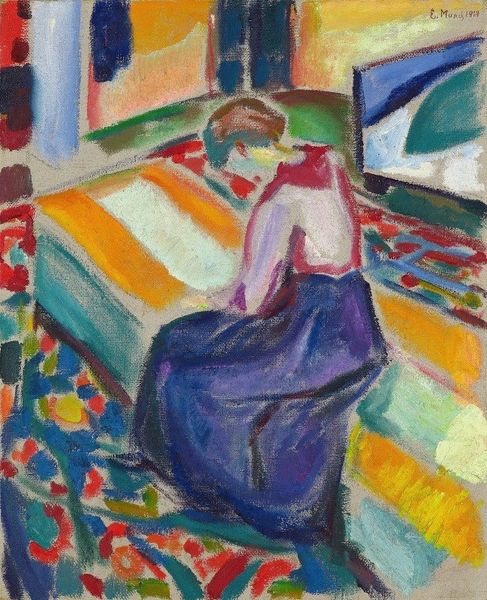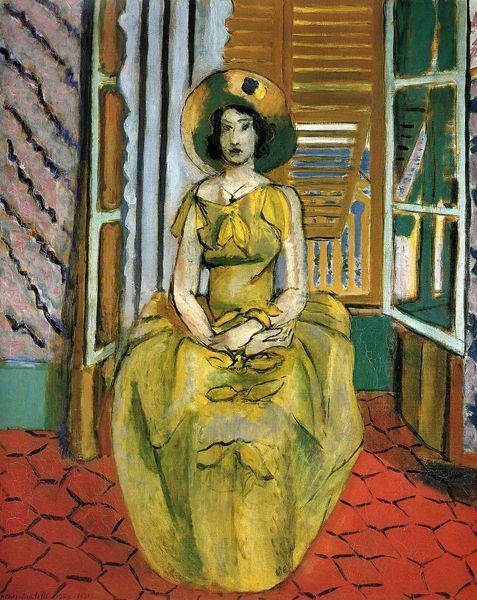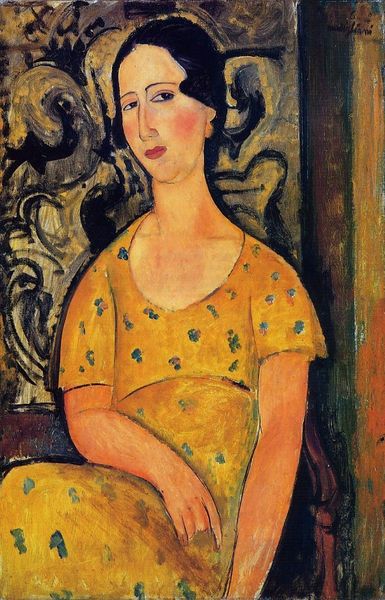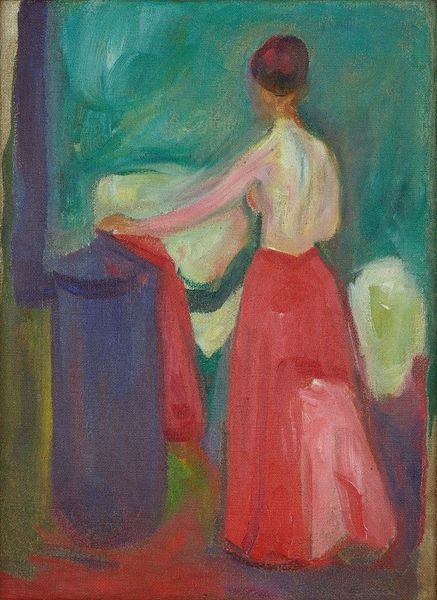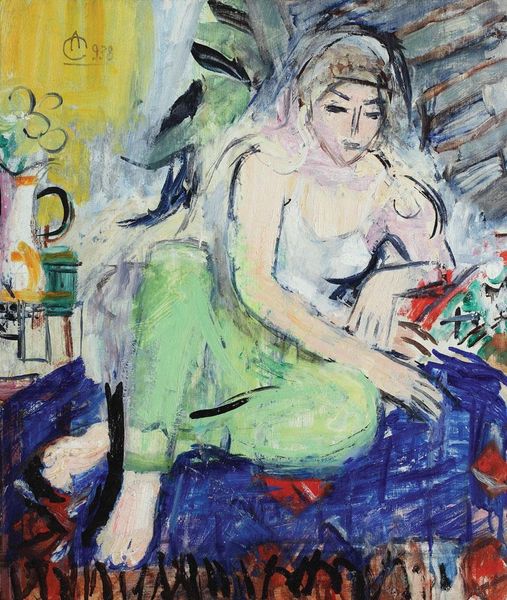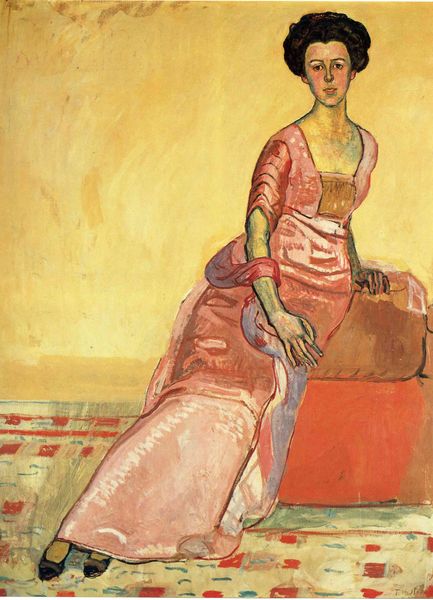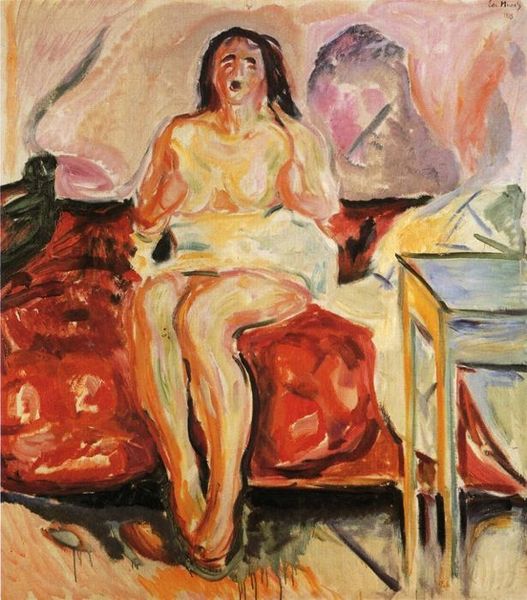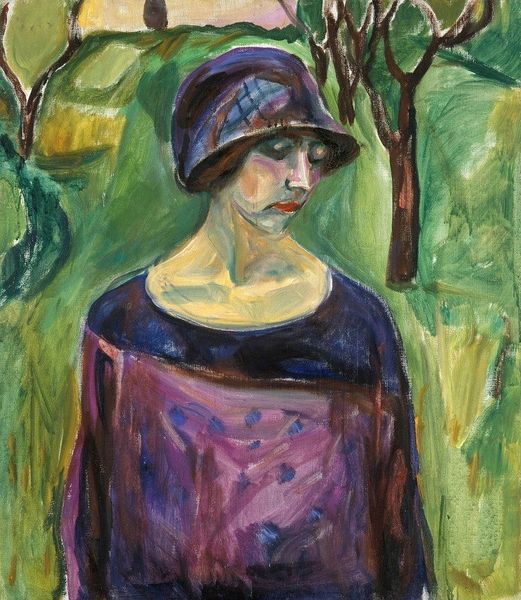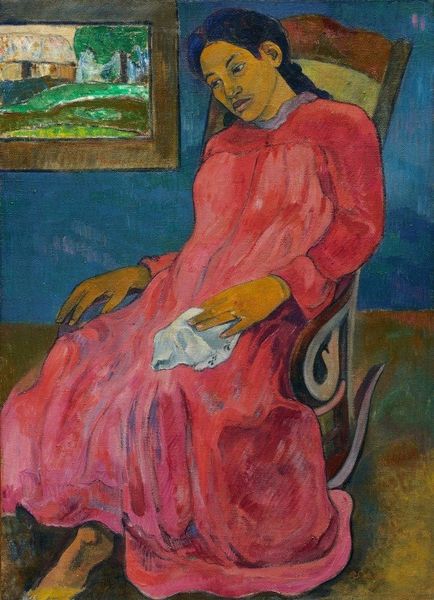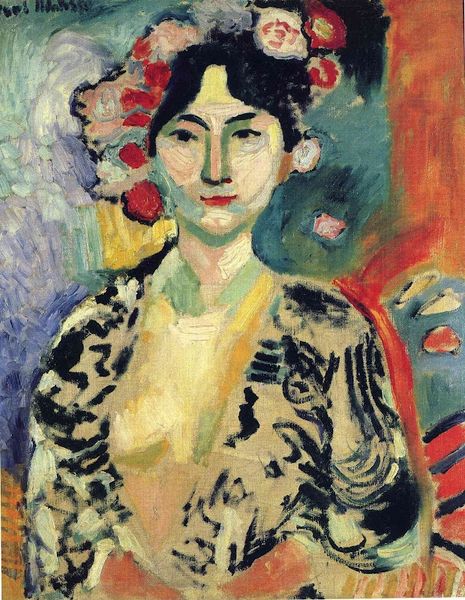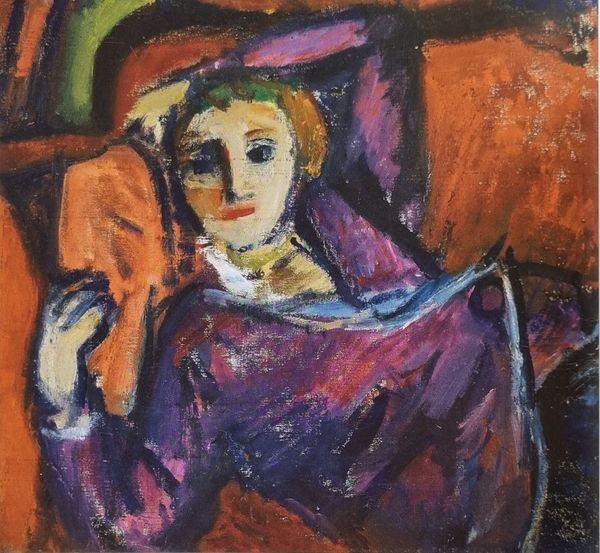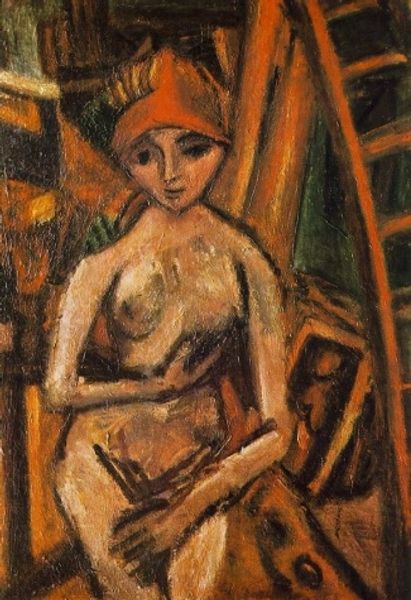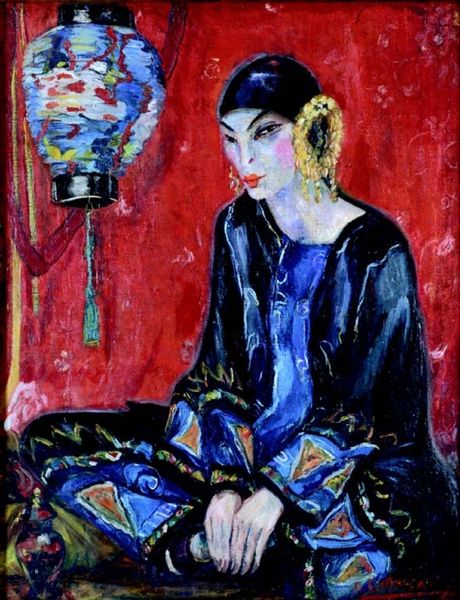
painting, oil-paint
#
portrait
#
figurative
#
painting
#
canvas painting
#
oil-paint
#
oil painting
#
expressionism
#
symbolism
Copyright: Public Domain: Artvee
Editor: So, this is Edvard Munch's "Woman Standing in the Doorway," painted around 1906 or 1907. The oil on canvas gives the piece a palpable texture, doesn't it? I'm really drawn to the layering of the colors; the room almost feels alive. What's your interpretation of this work? Curator: Well, focusing on the materiality, look at how Munch uses the oil paint itself. He’s not just representing a scene but building it, layer upon layer. Notice the brushstrokes creating a dense, almost tangible atmosphere. Consider, too, the social context of artistic production. Who had access to these materials, and what did it mean to create an image like this with them? It reflects the industrial production, how widespread that process was at the turn of the century. Editor: That's interesting. I hadn't considered the social implications of the oil paint itself. Curator: Exactly. The material itself contributes to the painting's meaning. The way the materials manifest meaning makes Munch's angst more present. Can you imagine this same composition created using fresco? Editor: Not at all. So much would be lost, I think. What does this piece say about challenging the idea of fine art? Curator: In challenging these traditions, this painting suggests art making itself, not something only masters could practice. Through his use of paint and broad strokes, and rejection of classical ideals of beauty, Munch democratized art making. Editor: I see, it's about access and redefining artistry. I learned so much just considering it from that point of view. Curator: And that, in turn, forces us to confront our own biases about skill, labor, and the very definition of art.
Comments
No comments
Be the first to comment and join the conversation on the ultimate creative platform.
